Reducing Wind Turbine Blade Drag Using Riblet Film

Researchers from the University of Minnesota Saint Anthony Falls Laboratory (SAFL) and 3M have teamed up to study drag reduction in wind turbine blades. The team, part of the Eolos Wind Energy Research Consortium, aims to build new fundamental fluid mechanics research knowledge and understand how 3M’s experimental riblet films can help maximize energy capture. In the past, evaluation performed on this passive technology has been shown to be effective in reducing drag in various applications including passenger aircraft and gas turbines. For example, riblet film was used on the winning sailboats in the 1987 and 2010 America’s Cup races. This technology may prove to be increasingly valuable to the wind turbine manufacturers who are developing larger turbines, such as the ones used offshore.
About Riblet Technology
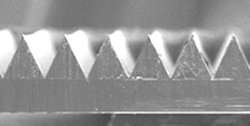
The surface of a riblet film has parallel grooves so small they cannot be seen by the human eye, and therefore the blade surface looks perfectly smooth. The research team is currently testing different film configurations in the SAFL wind tunnel. Measurements on the airfoil are taken before and after application of the film to study the difference in drag.
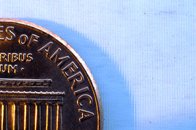
“When air passes over the turbine blade at the contact point between the blade and air, the velocity of the air comes to rest and the result is turbulence and skin friction,” said University of Minnesota Professor Roger Arndt. “Riblets help to organize and channel that turbulence so it’s less energetic and results in less energy loss. This delays lateral wind movement.” The channeling effect was first noted in shark skin research in the 60s and 70s. Then NASA picked up the study and looked for ways to apply riblet technology in aerospace engineering.
Meet the Research Team
The research project is sponsored by the U.S. Department of Energy. The project team includes Memo Izzi, Riblet film Project Leader at 3M’s Renewable Energy Division; Fotis Sotiropoulos, Professor and Director of SAFL; Roger Arndt, Professor Emeritus; Leonardo Chamorro, Research Associate; Aaron Boomsma, PhD Student; and James Tucker, Engineer.
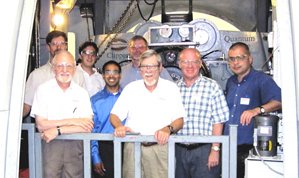
“The opportunity to test our riblet film technology in a large wind tunnel will allow us to test this technology in real-life conditions. The collaboration resulting from this consortium provides valuable opportunities for resource sharing between industry engineers and academic researchers,” said Izzi.
Arndt echoed this sentiment: “Working together in this partnership, we can identify the best film configuration, and eventually we’ll be able to validate our results by testing on a full-scale turbine in the field.”
Research Methods
The research team began by gathering baseline data that measured the drag on a flat plate with and without riblet film. Then they started to quantify drag reduction by working with a full-scale 2.5MW Clipper turbine airfoil section (of 1 meter chord length, typical of the 88% blade span). The foil is covered with film of one specific riblet size, placed in the wind tunnel’s freestream flow , and tested at different angles of attack at a full scale Reynolds number of Re=2.67×10^6 (based on the airfoil chord length).
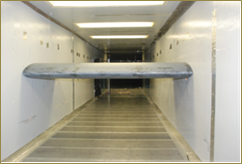
Force sensors measure lift and drag. A combination of single and cross-wire anemometers are used to study the turbulent scale-to-scale interaction in the near wall region, aiming to better understand the physical mechanisms of drag reduction and flow characteristics in that region. By gathering many different measurements, the team gains a clearer understanding of the physical mechanisms of drag reduction.
“We are also conducting numerical modeling, then combining numerical and experimental data to understand the fundamental fluid mechanics associated with riblet films. This, in turn, will help determine the right film and configuration to maximize performance for industry,” said Arndt.
Leonardo Chamorro agreed: “Our research is showing we can achieve relevant drag reduction and power increase to benefit industry and power generation.”
Outcomes
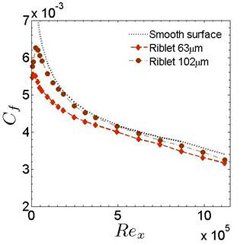
These new findings confirm previously published results indicating that drag reductions of up to 8% can be achieved for industrial turbine blade profiles. Riblet films also offer at least one other benefit: It may also help reduce blade noise.
Once the initial research is complete and the team has determined the optimal riblet film configuration, field tests will begin on a full-scale Clipper turbine at SAFL’s Eolos Wind Research Station.
Additional Resources
